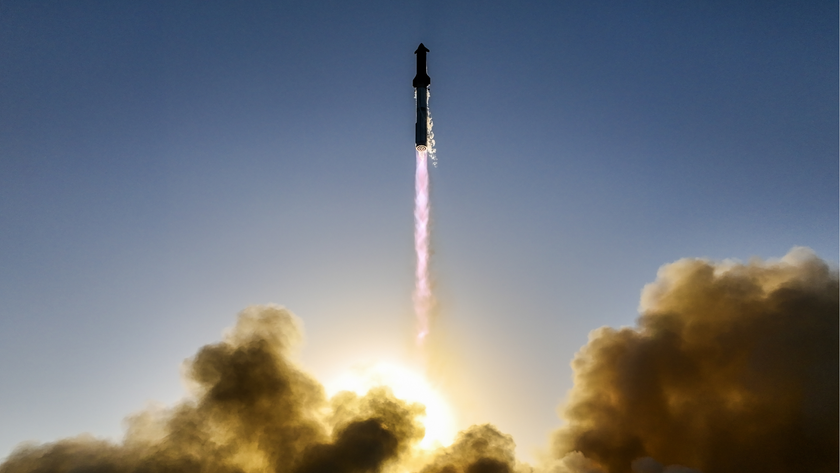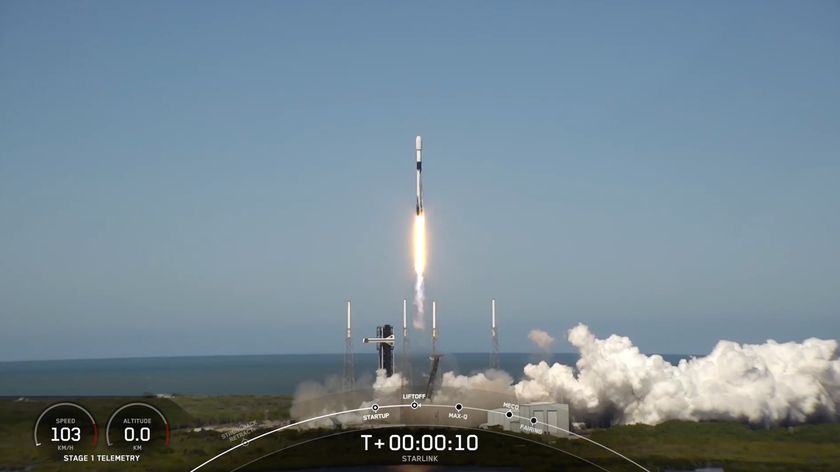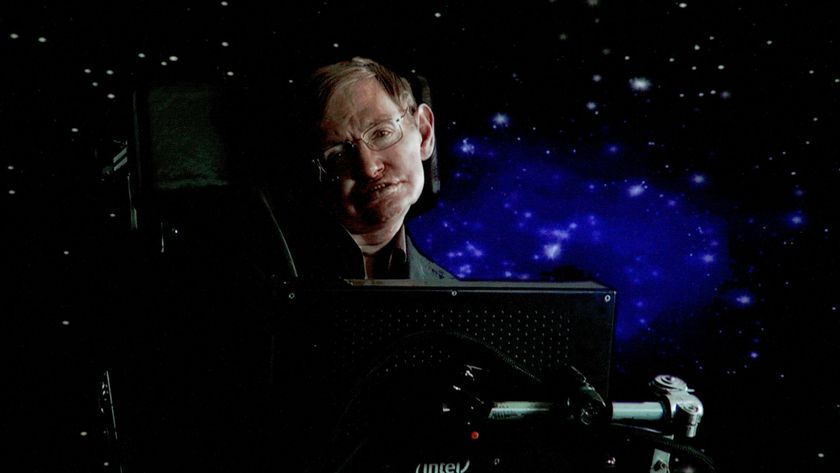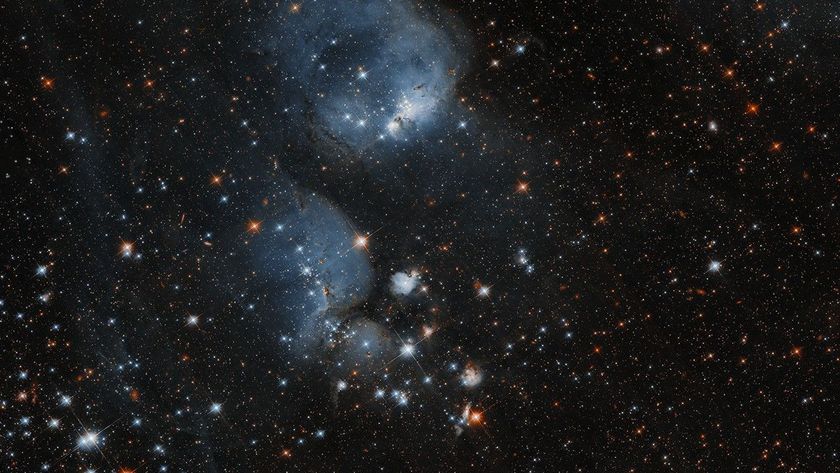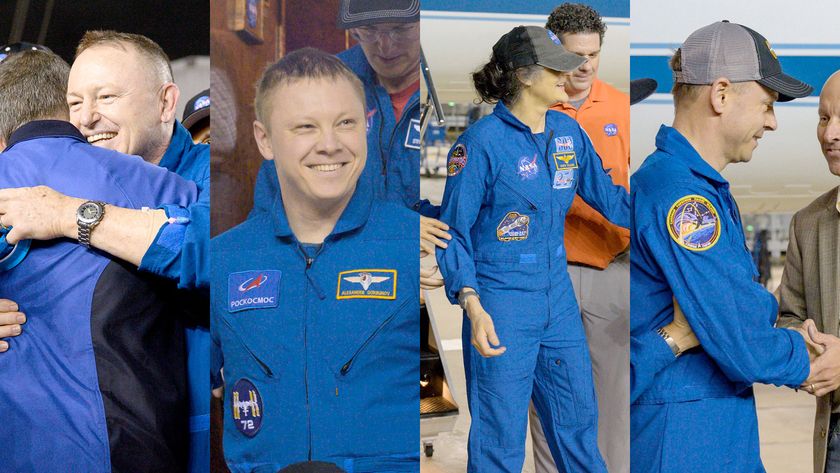Dead NASA Satellite Falling From Space, But When & Where?
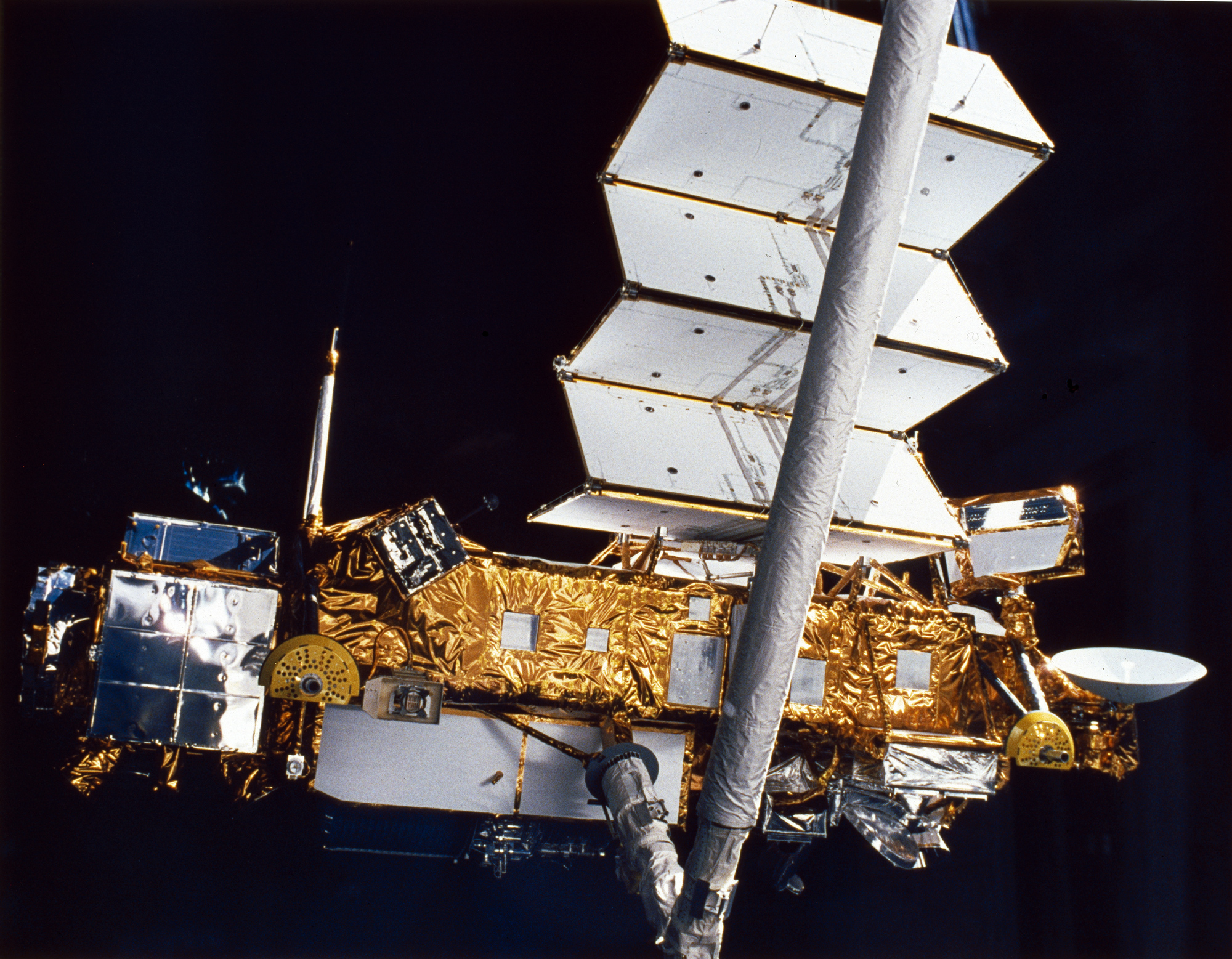
For the latest news about NASA's UARS spacecraft fall, visit: Falling NASA Satellite: Complete Coverage of UARS Spacecraft's Fiery Demise.
This story was updated at 2:05 p.m. EDT.
An out-of-control NASA satellite that is dead in space will plunge back to Earth in the next few weeks, but exactly when and where the spacecraft will fall are still a mystery, space agency and military officials said today.
The spacecraft, called the Upper Atmosphere Research Satellite, is about the size of a school bus and is expected to re-enter Earth's atmosphere sometime between late September and early October, NASA officials said. The nearly 12,500-pound (5,668-kilogram) satellite will fall over a stretch of land more than 500 miles (804 kilometers) long somewhere between northern Canada and southern South America.
But NASA and U.S. military officials tracking the defunct UARS satellite won't have a better idea of where the spacecraft will fall until around two hours before it happens. [Photos: Space Debris & Cleanup Concepts]
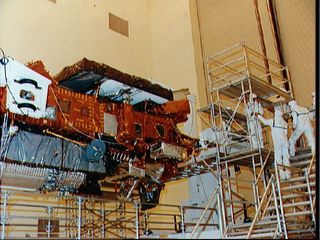
"We continue to say late September is the best estimate that we can give right now," Air Force Maj. Michael Duncan, deputy chief of the U.S. Strategic Command's space situational awareness division, told reporters today (Sept. 9). " There are so many factors that will affect it between now and that point in time — the atmosphere changes on a daily basis — that it's impossible to say how that's going to impact this re-entry."
Even two hours before re-entry, the military will only be able to pinpoint the area of impact to within about 6,000 miles (10,000 kilometers), Duncan said.
Get the Space.com Newsletter
Breaking space news, the latest updates on rocket launches, skywatching events and more!
There is a 1-in-3,200 chance that a person somewhere on Earth could be hit by falling satellite debris, but the odds of the UARS spacecraft re-entering over a populated area are extremely remote, NASA officials said. [Space Junk FAQ: Falling Space Debris Explained]
"So those are actually very, very low odds that anyone is going to be struck by a piece of debris," said Nick Johnson, the chief scientist of NASA's Orbital Debris Program at the agency's Johnson Space Center in Houston.
Johnson said 26 large pieces of the UARS satellite are expected to survive the re-entry and reach the Earth's surface. Altogether, about 1,170 pounds (532 kg) of material from the UARS satellite are expected to reach Earth. The largest piece of debris could weigh nearly 300 pounds (150 kg).
"Throughout the entire 54 years of the Space Age there has been no report of anyone being injured or impacted by any re-entering debris," Johnson said.
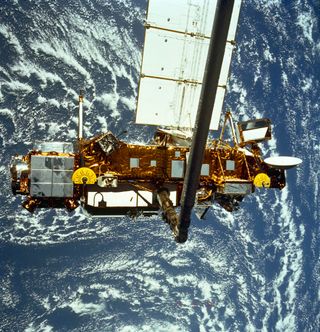
Dead satellite in space
The $750 million UARS satellite has been dead in orbit since 2005, when it was decommissioned after a 14-year Earth-observation mission.
The spacecraft is the largest NASA satellite to make an uncontrolled fall back to Earth in years, agency officials said. It is about 35 feet (10.7 meters) long and 15 feet (4.5 m) wide.
Johnson said that, on average, a spacecraft as large as UARS falls back to Earth about once a year. In 2010, a total of 400 pieces of satellites or spent rockets fell back to Earth, though most pieces either burned up during re-entry, fell into the ocean or fell over unpopulated areas, he added.
"Satellites re-entering is actually very commonplace," Johnson said.
NASA is encouraging any member of the public who finds a piece of the UARS satellite to not touch the object and notify local law enforcement authorities. The satellite's remains are still owned by the United States government and cannot be sold to space memorabilia hunters NASA officials said.
NASA launched the UARS satellite in 1991 aboard the space shuttle Discovery on a mission to study Earth's upper atmosphere. In particular, the spacecraft examined Earth's ozone layer to help scientists better understand ozone layer depletion. [Infographic: Earth's Atmosphere from Top to Bottom]
The satellite was also able to track atmospheric effects from the Mt. Pinatubo volcano eruption in the Philippines at the time, said Paul Hertz, chief scientist for NASA's science missions.
Hertz said that the UARS satellite was shut down because the observations it was collecting were being performed by newer, better satellites.
In 2005, NASA commanded the spacecraft to use all of its remaining propellant to move into a lower orbit, one that would send it on a funeral dive back through Earth's atmosphere in about five or six years, Johnson said.
"The current orbit is about 245 kilometers by 275 kilometers," he added. "And obviously decreasing every day."
Eyes on the sky
NASA and the military's space tracking division are keeping a close watch on the UARS satellite for any changes in its descent over the next few weeks.
The space agency is posting weekly updates on the falling spacecraft on a special UARS mission website. The updates are coming from the Joint Space Operations Center at the U.S. Strategic Command at Vandenberg Air Force Base, Calif., which is tracking the satellite.
"The reason for the updates on NASA's part is to keep you and the public informed," said NASA spokeswoman Beth Dickey. "We know we will get a lot of questions about it, so we want to be up front about it."
Space debris is one of the most challenging hurdles facing space agencies and satellite operators today. According to NASA, there are about 22,000 pieces of space junk larger than 4 inches (10 cm) currently being tracked by the U.S. Space Surveillance Network. Only 1,000 of those objects are actually working spacecraft, the agency states.
Last week, a report by the National Research Council found that the amount of space junk around Earth has reached a tipping point in which, even if no new debris were added, objects would continue to create more debris through collisions. That report states that the need to limit or clean up space debris is more important than ever.
Skywatchers on alert
Keeping a skywatching eye on the comings and goings of UARS as it nears re-entry is a global network of satellite surveillance amateurs.
According to satellite sleuth Harro Zimmer of Berlin, Germany, his current analysis — based on couple of different methods — shows a possible decay window between Sept. 29 and Oct. 5.
"The last word will be coming from the solar activity over the next two weeks," Zimmer told SPACE.com.
Zimmer also advised that Belgian observer, Bram Dorreman, has reported that UARS looks to be slowly rotating with a period of 17 seconds. Its magnitude changes from 1.2 to 3.5 on the scale astronomers use to measure the brightness of objects in space. On that scale, the brighter an object is, the lower the number of its magnitude.
Johnson said that if the UARS satellite does re-enter over a populated region, it should be a magnificent sight to skywatchers on the ground. But even that is a long shot.
"This would be quite a nice show. It is a relatively large vehicle, it would be visible in daylight, Johnson said. "Odds are it's going to happen over an ocean, unlikely to be seen unless it's, you know, an airliner. We've had reports like that before. "
To follow NASA's UARS satellite updates, click here.
SPACE.com's Space Insider Columnist Leonard David contributed to this report from Colorado.You can follow SPACE.com Managing Editor Tariq Malik on Twitter @tariqjmalik. Follow SPACE.com for the latest in space science and exploration news on Twitter @Spacedotcom and on Facebook.
Join our Space Forums to keep talking space on the latest missions, night sky and more! And if you have a news tip, correction or comment, let us know at: community@space.com.

Tariq is the Editor-in-Chief of Space.com and joined the team in 2001, first as an intern and staff writer, and later as an editor. He covers human spaceflight, exploration and space science, as well as skywatching and entertainment. He became Space.com's Managing Editor in 2009 and Editor-in-Chief in 2019. Before joining Space.com, Tariq was a staff reporter for The Los Angeles Times covering education and city beats in La Habra, Fullerton and Huntington Beach. In October 2022, Tariq received the Harry Kolcum Award for excellence in space reporting from the National Space Club Florida Committee. He is also an Eagle Scout (yes, he has the Space Exploration merit badge) and went to Space Camp four times as a kid and a fifth time as an adult. He has journalism degrees from the University of Southern California and New York University. You can find Tariq at Space.com and as the co-host to the This Week In Space podcast with space historian Rod Pyle on the TWiT network. To see his latest project, you can follow Tariq on Twitter @tariqjmalik.
